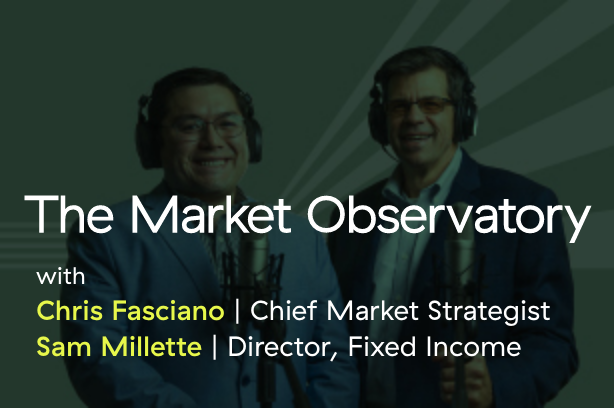My colleague Sam Millette, manager, fixed income on Commonwealth’s Investment Management and Research team, has helped me put together this month’s Economic Risk Factor Update. Thanks for the assist, Sam!

February 9, 2022
My colleague Sam Millette, manager, fixed income on Commonwealth’s Investment Management and Research team, has helped me put together this month’s Economic Risk Factor Update. Thanks for the assist, Sam!
January was a terrible month. Worries about economic damage from the Omicron wave were combined with the Fed’s perceived decision to start raising interest rates based on inflation levels at a 40-year high. Stocks were knocked down around the world. Tech stocks got hit especially hard, but even fixed income was down. It really was a terrible month.
February 4, 2022
Wow. I have rarely been so wrong about an economic report—or so glad to be wrong. And it wasn’t just me. The range of expected values for today’s jobs report was roughly between -400,000 and +250,000. Everyone was very wrong as it came in at +467,000. This was a much, much larger-than-expected gain, and it clearly shows there is something going on that analysts are missing.
February 3, 2022
The official jobs report comes out this Friday. Expectations are for another slowdown, with about 175,000 jobs added, down from 199,000 in December. With everything that is going on, especially the number of people who have the Omicron variant and are presumably not at work, that would be a great result. Unfortunately, the real number is likely to be well below that and will probably be negative—maybe significantly so.
February 1, 2022
After a strong close to 2021, markets pulled back to start the year, with U.S. indices dropping between 3 and 10 percent. On the medical front, the Omicron wave continued. As case growth rose to new highs, consumer and business confidence took a hit. Finally, January reports showed inflation at a 40-year high, and the Fed announced a rate hike in March was very likely.
January 27, 2022
One of the key sources of uncertainty that has driven the market pullback over the past weeks has been interest rates. Specifically, the rise in rates—and the fear that the Fed would tighten further—pulled growth stocks down, including many in the tech sector, and generated significant uncertainty around where the economy was going.
January 26, 2022
I see the market is bouncing back a bit, and I know the headlines of the day will revolve around the Fed meeting and press conference, which are still a couple of hours away and I will cover tomorrow. So, let’s do something a bit different today. Let’s take a look at my 100K project.
January 25, 2022
Yesterday gave a great example of what I meant in Friday’s post when I said the stock market was not crashing. For those who missed it, the U.S. markets dropped sharply during the day, with the Nasdaq down almost 5 percent on the day, only to rebound at day’s end and land in the green. This kind of reversal is rare and signaled that—at the depths of the decline yesterday—a number of investors saw enough value in those prices to step in and buy.
January 21, 2022
Yesterday, I got two emails requesting a response to the current market pullback. I received another couple of emails referring to a prediction (by a very well-known investor) that the stock market was now inevitably poised for a 50 percent decline. Clearly, the anxiety level is high, which makes sense given the multitude of worries and things that could go wrong. We have the Omicron wave, inflation, interest rates, a potential war in Ukraine, and on and on. Is this the end of days—again?
January 20, 2022
Now that we’re two years into the pandemic, analysts have a lot more context than we did at the start. We have seen multiple waves of the virus, have watched the economy react in real time, and have a sense of what the policy responses are likely to be. As such, we could look back on history for some guidance as to what was likely to happen with the winter Delta wave—and that guidance by and large worked.

Episode 13
November 19, 2025
Episode 12
October 14, 2025
Episode 11
September 10, 2025
Episode 10
August 13, 2025
Episode 9
July 23, 2025
The information on this website is intended for informational/educational purposes only and should not be construed as investment advice, a solicitation, or a recommendation to buy or sell any security or investment product. Please contact your financial professional for more information specific to your situation.
Certain sections of this commentary contain forward-looking statements that are based on our reasonable expectations, estimates, projections, and assumptions. Forward-looking statements are not guarantees of future performance and involve certain risks and uncertainties, which are difficult to predict. Past performance is not indicative of future results. Diversification does not assure a profit or protect against loss in declining markets.
The S&P 500 Index is a broad-based measurement of changes in stock market conditions based on the average performance of 500 widely held common stocks. All indices are unmanaged and investors cannot invest directly in an index.
The MSCI EAFE (Europe, Australia, Far East) Index is a free float‐adjusted market capitalization index that is designed to measure the equity market performance of developed markets, excluding the U.S. and Canada. The MSCI EAFE Index consists of 21 developed market country indices.
One basis point (bp) is equal to 1/100th of 1 percent, or 0.01 percent.
The VIX (CBOE Volatility Index) measures the market’s expectation of 30-day volatility across a wide range of S&P 500 options.
The forward price-to-earnings (P/E) ratio divides the current share price of the index by its estimated future earnings.
Third-party links are provided to you as a courtesy. We make no representation as to the completeness or accuracy of information provided on these websites. Information on such sites, including third-party links contained within, should not be construed as an endorsement or adoption by Commonwealth of any kind. You should consult with a financial advisor regarding your specific situation.
Member FINRA, SIPC
Please review our Terms of Use.
Commonwealth Financial Network®